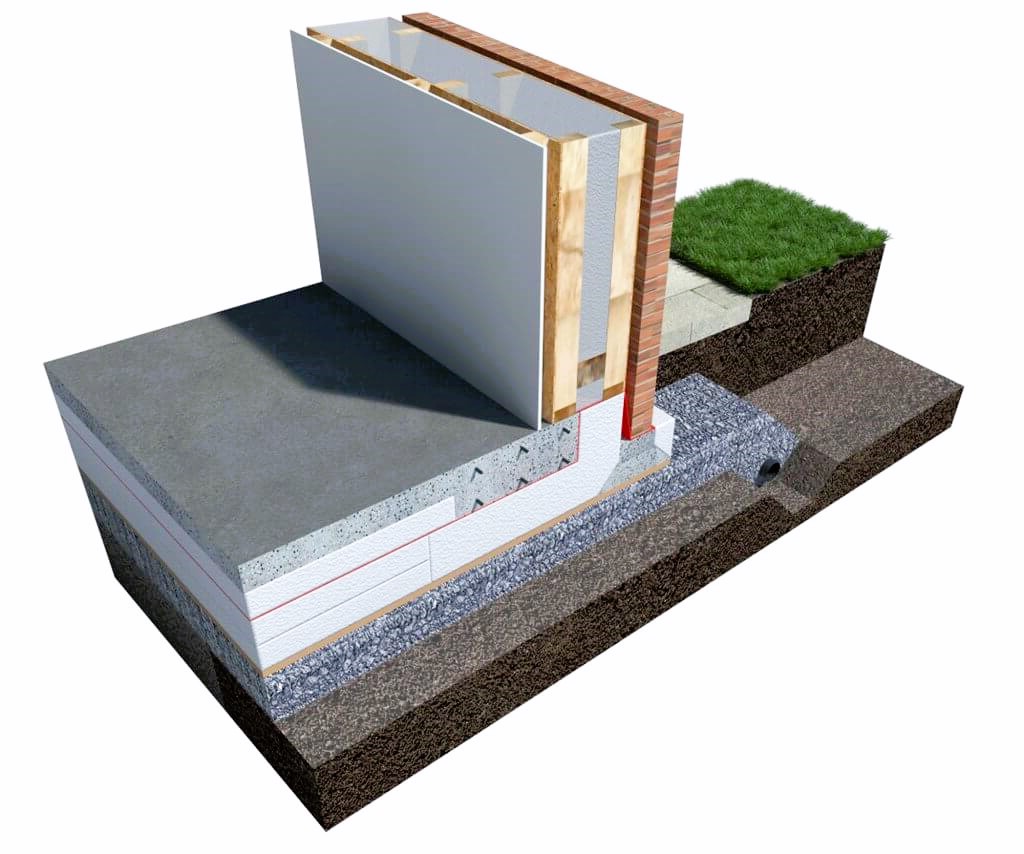Foundation Insulation: Key Considerations for Efficient Installation
Foundation insulation is a crucial component of a well-designed and energy-efficient building envelope. Proper insulation not only enhances the comfort of indoor spaces but also contributes to energy savings by reducing heat loss through the foundation. In this article, we will explore the key considerations and techniques involved in foundation insulation, shedding light on the importance of this process for the overall energy performance and durability of a structure.
1. Understanding the Need for Foundation Insulation
The foundation of a building is in direct contact with the ground, making it susceptible to heat transfer. In colder climates, this can result in significant heat loss from the interior of the building to the surrounding soil. Foundation insulation acts as a barrier, reducing the heat flow and preventing the foundation from becoming a source of energy inefficiency.
2. Types of Foundation Insulation Materials
Various insulation materials are suitable for foundation applications, each with its own set of characteristics and benefits. Common options include:
- Expanded Polystyrene (EPS): Lightweight and moisture-resistant, EPS is a popular choice for foundation insulation. It comes in rigid panels or boards that are easy to install and offer good thermal performance.
- Extruded Polystyrene (XPS): XPS is a dense and durable insulation material that provides excellent resistance to moisture. It is available in various thicknesses and is known for its high compressive strength.
- Polyurethane Foam: This type of foam insulation offers high thermal resistance and can be sprayed or injected into cavities, providing a seamless and airtight solution.
- Fiberglass and Mineral Wool: These materials are available in the form of rigid boards or batts and are known for their fire resistance and sound-absorbing properties.
- Closed-Cell Spray Foam: Applied as a liquid, this foam expands and hardens to form a continuous and effective insulation layer. It provides an excellent air barrier and can conform to irregular surfaces.
3. Installation Techniques for Foundation Insulation

a. Exterior Insulation:
Placing insulation on the exterior of the foundation is a common approach. This method helps to keep the foundation walls warmer, reducing the risk of condensation. It also protects the foundation from temperature extremes and provides a continuous thermal barrier. Improve the comfort in your home with our article about Natural Light.
Benefits:
- Minimizes thermal bridging.
- Protects foundation from temperature fluctuations.
- Reduces the risk of condensation on interior surfaces.
Considerations:
- Requires excavation around the foundation.
- May involve modifications to landscaping.
- Waterproofing is crucial to prevent moisture intrusion.
b. Interior Insulation:
Installing insulation on the interior side of the foundation is another option. This method is often chosen for existing buildings or when exterior insulation is impractical.
Benefits:
- Does not require excavation.
- Suitable for retrofitting existing structures.
- Allows easy access for repairs or modifications.
Considerations:
- May result in thermal bridging at the top of the foundation wall.
- Requires careful detailing to avoid moisture issues.
- Reduces interior floor space.
c. Crawl Space Insulation:
In buildings with crawl spaces, insulating the walls and floor of the crawl space is essential. This prevents cold air infiltration and reduces the potential for moisture-related issues.
Benefits:
- Improves comfort in living spaces above.
- Guards against moisture intrusion.
- Can be combined with other foundation insulation methods.
Considerations:
- Requires access to the crawl space.
- Adequate ventilation is crucial.
- Moisture management is essential.
4. Moisture Management and Waterproofing

Moisture management is a critical aspect of foundation insulation. The insulation material must be resistant to water and installed in conjunction with effective waterproofing measures. Proper drainage systems, moisture barriers, and the correct placement of insulation materials are essential to prevent moisture-related problems such as mold, mildew, and structural damage.
5. Building Code and Standards Compliance
When undertaking foundation insulation, it is imperative to adhere to local building codes and standards. These regulations provide guidelines on the minimum R-values (thermal resistance) required for insulation materials based on climate zones. Compliance ensures that the insulation meets the necessary performance standards for energy efficiency and durability.
Conclusion
Foundation insulation plays a pivotal role in creating an energy-efficient and comfortable living environment. Whether applied to the exterior or interior, in crawl spaces, or on slab foundations, proper insulation mitigates heat loss, reduces energy consumption, and enhances the overall performance of a building. By understanding the different insulation materials, installation techniques, and considerations, homeowners and builders can make informed decisions that contribute to the long-term sustainability of structures.
For more information on foundation insulation and building standards, visit Wikipedia. Stay informed about the latest developments in construction practices and insulation technologies to ensure that your foundation insulation meets the highest standards for efficiency and durability. Whether you’re building a new home or upgrading an existing one, investing in quality foundation insulation is a step towards a more sustainable and energy-conscious future.

